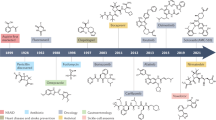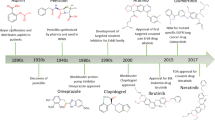Abstract
Covalent inhibition targeting noncatalytic residues is rapidly gaining attention in drug discovery. Protein tyrosine phosphatases 1B (PTP1B) is an attractive target for therapeutic interventions in cancer and other diseases. Two binding sites of PTP1B enzyme were identified, catalytic and allosteric. The catalytic site is deep and narrow which protects the active site amino acid residue Cys215 from covalent inhibition, whereas the allosteric site is more hydrophobic and less conserved with Cys121 residue, to which covalent inhibitors can bind. A recent experimental report highlighted that a highly selective inhibitor, 73U, was found to bind covalently in the allosteric region of PTP1B enzyme. Using a robust covalent simulations protocol which was developed in-house, we explore the origin and impact of covalent inhibition upon inhibitor binding to allosteric site. For this, covalently bound and apo enzymes were investigated. Results revealed that allosteric covalent inhibition has ensued in a significant disturbance in the overall network of interaction between Cys121 and other nearby residues, more specifically Tyr124 and His214. The covalent inhibition also exhibited better protein stability as evident from positive correlation between residues in the allosteric site and multiple van der Waal, hydrogen bond and ionic interactions. Surface analysis revealed an increase in the accessible surface area in order to facilitate for the covalent inhibitor to sink in. These findings indicate that exploring allosteric covalent mechanism of PTP1B enzyme offers an opportunity to develop novel PTP1B covalent inhibitors with high potency and selectivity for cancer and other diseases.










Similar content being viewed by others
References
Östman, A., Hellberg, C., & Böhmer, F. D. (2006). Protein-tyrosine phosphatases and cancer. Nature Reviews Cancer, 6(4), 307–320. https://doi.org/10.1038/nrc1837.
Shinde, R. N., Siva Kumar, G., Eqbal, S., & Elizabeth Sobhia, M. (2018). Screening and identification of potential PTP1B allosteric inhibitors using in silico and in vitro approaches. PLoS ONE. https://doi.org/10.1371/journal.pone.0199020.
Viswanatharaju Ruddraraju, K., & Zhang, Z.-Y. (2017). Covalent inhibition of protein tyrosine phosphatases. Molecular BioSystems, 13(7), 1257–1279. https://doi.org/10.1039/c7mb00151g.
Feldhammer, M., Uetani, N., Miranda-Saavedra, D., & Tremblay, M. L. (2013). PTP1B: a simple enzyme for a complex world. Critical Reviews in Biochemistry and Molecular Biology, 48(5), 430–445. https://doi.org/10.3109/10409238.2013.819830.
Hon, J., Hwang, M. S., Charnetzki, M. A., Rashed, I. J., Brady, P. B., Quillin, S., & Makinen, M. W. (2017). Kinetic characterization of the inhibition of protein tyrosine phosphatase-1B by Vanadyl (VO2+) chelates. Journal of Biological Inorganic Chemistry. https://doi.org/10.1007/s00775-017-1500-1.
Cui, W., Cheng, Y.-H., Geng, L.-L., Liang, D.-S., Hou, T.-J., & Ji, M.-J. (2013). Unraveling the Allosteric Inhibition Mechanism of PTP1B by Free Energy Calculation Based on Umbrella Sampling. Journal of Chemical Information and Modeling, 53(5), 1157–1167. https://doi.org/10.1021/ci300526u.
Hansen, S. K., Cancilla, M. T., Shiau, T. P., Kung, J., Chen, T., & Erlanson, D. A. (2005). Allosteric inhibition of PTP1B activity by selective modification of a non-active site cysteine residue. Biochemistry. https://doi.org/10.1021/bi047417s.
Wiesmann, C., Barr, K. J., Kung, J., Zhu, J., Erlanson, D. A., Shen, W., … Hansen, S. K. (2004). Allosteric inhibition of protein tyrosine phosphatase 1B. Nature Structural & Molecular Biology. https://doi.org/10.1038/nsmb803.
Khan, S., Bjij, I., Betz, R., & Soliman, M. E. (2018). Reversible versus irreversible inhibition modes of ERK2: a comparative analysis for ERK2 protein kinase in cancer therapy. Future Medicinal Chemistry. https://doi.org/10.4155/fmc-2017-0275.
Khan, S., Bjij, I., Fisayo, O., Agoni, C., Adeniji, E., & Soliman, M. E. (2018). Covalent simulations of covalent/irreversible enzyme inhibition in drug discovery—a reliable technical protocol. Future Medicinal Chemistry. https://doi.org/10.4155/fmc-2017-0304.
Punthasee, P., Laciak, A. R., Cummings, A. H., Ruddraraju, K. V., Lewis, S. M., Hillebrand, R., & Gates, K. S. (2017). Covalent allosteric inactivation of protein tyrosine phosphatase 1B (PTP1B) by an inhibitor-electrophile conjugate. Biochemistry, 56(14), 2051–2060. https://doi.org/10.1021/acs.biochem.7b00151.
Hanwell, M. D., Curtis, D. E., Lonie, D. C., Vandermeersch, T., Zurek, E., & Hutchison, G. R. (2012). Avogadro: an advanced semantic chemical editor, visualization, and analysis platform. Journal of Cheminformatics, 4(1), 17 https://doi.org/10.1186/1758-2946-4-17.
Trott, O., & Olson, A. J. (2010). AutoDock Vina: improving the speed and accuracy of docking with a new scoring function, efficient optimization, and multithreading. Journal of Computational Chemistry, 31(2), 455–61. https://doi.org/10.1002/jcc.21334.
Doncheva, N. T., Assenov, Y., Domingues, F. S., & Albrecht, M. (2012). Topological analysis and interactive visualization of biological networks and protein structures. Nature Protocols, 7(4), 670–685. https://doi.org/10.1038/nprot.2012.004.
Salomon-Ferrer, R., Case, D. A., & Walker, R. C. (2013). An overview of the Amber biomolecular simulation package. Wiley Interdisciplinary Reviews: Computational Molecular Science. https://doi.org/10.1002/wcms.1121.
Betz, R. (2017). Dabble. https://doi.org/10.5281/ZENODO.836914.
Salomon-Ferrer, R., Götz, A. W., Poole, D., Le Grand, S., & Walker, R. C. (2013). Routine microsecond molecular dynamics simulations with AMBER on GPUs. 2. Explicit Solvent Particle Mesh Ewald. Journal of Chemical Theory and Computation, 9(9), 3878–3888. https://doi.org/10.1021/ct400314y.
Götz, A. W., Williamson, M. J., Xu, D., Poole, D., Le Grand, S., & Walker, R. C. (2012). Routine microsecond molecular dynamics simulations with AMBER on GPUs. 1. Generalized born. Journal of Chemical Theory and Computation, 8(5), 1542–1555. https://doi.org/10.1021/ct200909j.
Kasahara, K., Fukuda, I., & Nakamura, H. (2014). A novel approach of dynamic cross correlation analysis on molecular dynamics simulations and its application to Ets1 dimer-DNA complex. PLoS ONE, 9(11), e112419. https://doi.org/10.1371/journal.pone.0112419.
Marsh, J. A., & Teichmann, S. A. (2011). Relative solvent accessible surface area predicts protein conformational changes upon binding. Structure, 19(6), 859–867. https://doi.org/10.1016/j.str.2011.03.010.
Durham, E., Dorr, B., Woetzel, N., Staritzbichler, R., & Meiler, J. (2009). Solvent accessible surface area approximations for rapid and accurate protein structure prediction. Journal of Molecular Modeling, 15(9), 1093–1108. https://doi.org/10.1007/s00894-009-0454-9.
Acknowledgements
I would like to acknowledge the Center for High Computing Performance (CHPC), Cape Town, for resources and technical support as well as the College of Health Sciences for their financial support.
Author information
Authors and Affiliations
Corresponding author
Ethics declarations
Conflict of Interest
The authors declare that they have no conflict of interest.
Additional information
Publisher’s note: Springer Nature remains neutral with regard to jurisdictional claims in published maps and institutional affiliations.
Supplementary Information
Rights and permissions
About this article
Cite this article
Khan, S., Bjij, I. & Soliman, M.E.S. Selective Covalent Inhibition of “Allosteric Cys121” Distort the Binding of PTP1B Enzyme: A Novel Therapeutic Approach for Cancer Treatment. Cell Biochem Biophys 77, 203–211 (2019). https://doi.org/10.1007/s12013-019-00882-5
Received:
Accepted:
Published:
Issue Date:
DOI: https://doi.org/10.1007/s12013-019-00882-5




